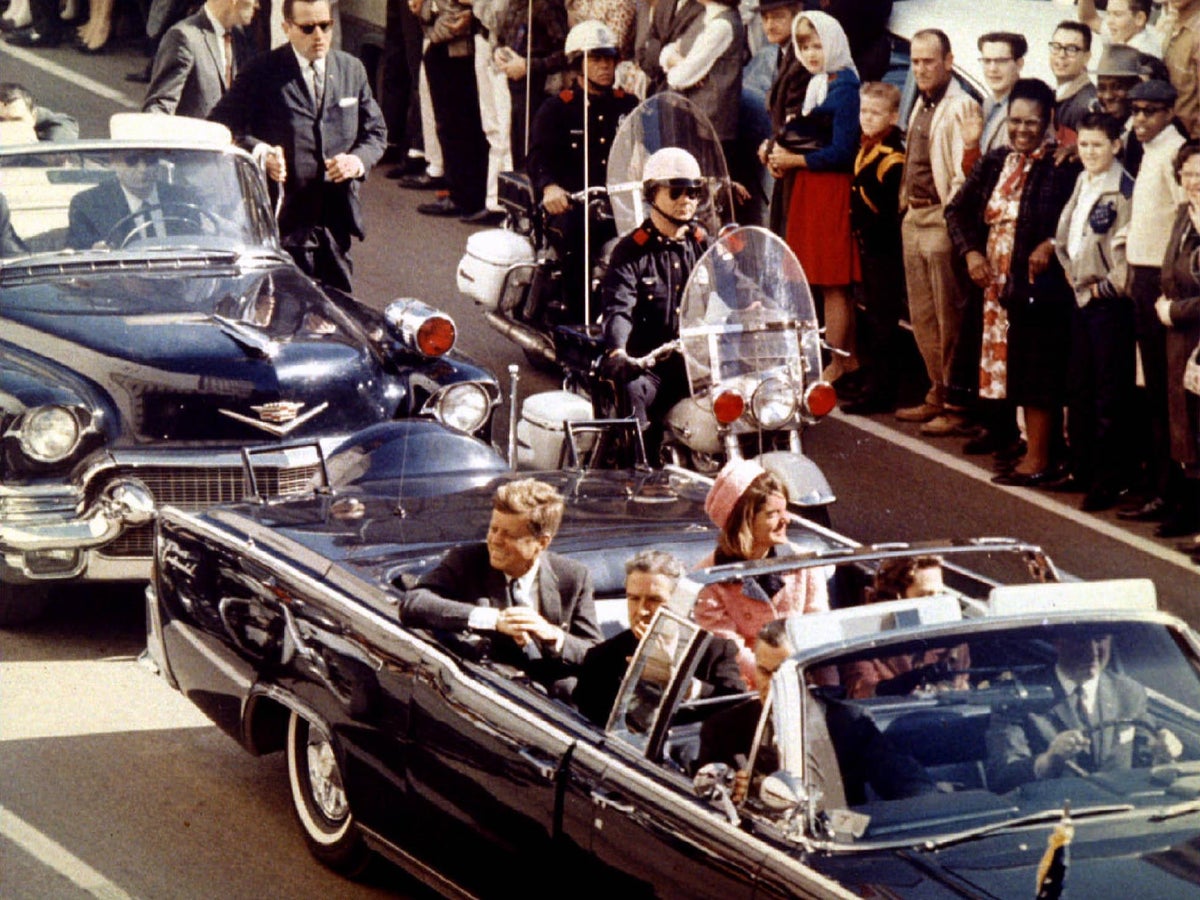
A former Secret Service agent who was metres away from John F Kennedy when the former president was assassinated in Dallas in 1963 has spoken out to cast fresh on the official findings.
Paul Landis, 88, who had been assigned to protect first lady Jackie Kennedy, challenged the Warren Commission’s findings that a “magic bullet” had struck and exited the president before hitting then-Texas governor John Connally Jr.
Mr Landis told the New York Times he recalled hearing several shots ring out in Dealy Plaza as he walked just behind the president’s limousine, and saw the president slump forward after being struck in the head.
He told the Times he was so close that he had to duck down to avoid being covered in the president’s brain tissue.
Mr Landis said that in the chaotic moments after the assassination, he picked up a near-pristine bullet from the back seat of the limo, just behind where Kennedy had been sitting.
According to the retired agent, he took the bullet to the hospital where Kennedy would be declared dead and placed it on the president’s stretcher so that it could be examined.
The bullet was long believed to have been found on Connally’s stretcher. Investigators claimed it passed through Kennedy’s throat, and then somehow hit the former governor’s right shoulder before causing wounds to his back, chest, wrist and thigh.
President John F Kennedy, his wife Jackie and Texas governor John Connally moments before Kennedy was assassinated in Dallas on 22 November 1963— (Reuters)
It became known as the “single bullet” or “magic bullet” theory, and was relied on by the Warren Commission as evidence that Lee Harvey Oswald had carried out the assassination alone.
Mr Landis told the Times he believes the bullet may have fallen from the president’s stretcher onto Connally’s when they were side-by-side in the hospital.
“There was nobody there to secure the scene, and that was a big, big bother to me,” Mr Landis told the Times. “All the agents that were there were focused on the president.”
The Warren Commission dismissed the possibility that the bullet came from Kennedy’s stretcher.
Surrounded by detectives, Lee Harvey Oswald talks to the media as he is led down a corridor of the Dallas police station— ( AP)
Mr Landis said he immediately realised the significance of the bullet, and had wanted to preserve it for forensic analysis. He theorised that the bullet had popped out from a shallow wound in the president’s back, due to its pristine condition.
Mr Landis was not interviewed by the Warren Commission, and has never disclosed his account before. His written statements immediately after the assassination failed to mention the discovery of the bullet.
Mr Landis, who spoke to the Times ahead of the release of his memoir The Final Witness next month, said he now questioned whether the single shooter theory was accurate after long believing Oswald acted alone.
“At this point, I’m beginning to doubt myself,” he said. “Now I begin to wonder.”
The intact bullet was matched to Oswald’s Mannlicher-Carcano rifle through ballistics testing.
If accurate, Mr Landis’ claims mean that the bullet could not have caused Connally’s injuries, which have long been a source of doubt for keen observers of the assassination.
Historian James Robenalt, who worked on Mr Landis’s memoir, said the former agent’s account raised the prospect of there being more than one shooter.
“If the bullet we know as the magic or pristine bullet stopped in President Kennedy’s back, it means that the central thesis of the Warren Report, the single-bullet theory, is wrong.”
JFK with first lady Jackie Kennedy in 1963
Film shot on the day showed Kennedy and Connally physically react to being shot roughly one second apart.
Investigators estimated it would have taken Oswald 2.3 seconds to reload the bolt action rifle, aim and fire again.
In an essay for Vanity Fair, Mr Robenalt wrote that if the “pristine” bullet did not travel through both men, then Connally might have been hit by a separate shot from “above and to the rear”.
“The FBI recreation suggests that Oswald would not have had enough time to get off two separate shots so quickly as to hit Connally after wounding the president in the back.”
Mr Landis, who was just 28 at the time of the assassination, said he was traumatised by witnessing the killing and left the Secret Service soon afterwards.
He claimed he had been unaware that the findings of the Warren Commission differed markedly from his account until reading the book Six Seconds In Dallas in 2014.
“There’s no goal at this point. I just think it had been long enough that I needed to tell my story,” Mr Landis told the Times.







